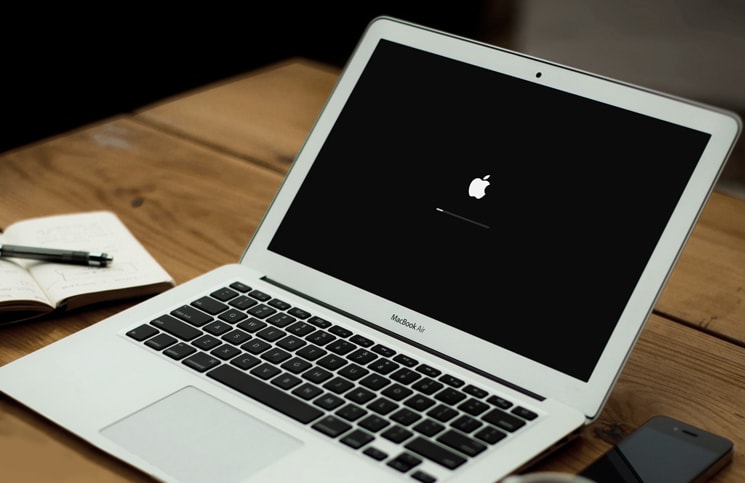Apple Install El Capitan
Go to the Applications folder. Open the program called “Install OS X El Capitan”. Follow the on-screen instructions. If this program is missing or will not run, then move it to the trash and empty the trash, followed by re-downloading it from the App Store. An alternative approach is to create a dedicated installation drive from the El. I created a USB disk with a bootable El Capitan as per this documentation. Plug-in your USB key on a turned-off computer. Start your Mac, press immediately OPTION (aka ALT) Select the Orange icon (aka a USB stick) labelled El Capitan. If it does not detect it after 10 sec and you only see your hard-drive. Try another USB port and wait 10 sec again. Now, launch the Mac App Store, go to the El Capitan page or Purchased tab and download OS X El Capitan from there. MAS will now download it from the local server at a high speed. Once downloaded, you may proceed with the installation by clicking on Continue when the setup launches. The OS X El Capitan v10.11.6 Update improves the stability, compatibility, and security of your Mac, and is recommended for all users. This update: Resolves an issue that may prevent settings from being saved in accounts with parental controls enabled.
I’m trying to sell a 2009 MacbookPro. It’s the model MacbookPro5.5 and Apple supports macOS El Capitan 10.11 as latest available version.
I’ve wiped all data from the installed SSD and had to boot from an external disk. Now I’ve got two problems:
- I’ve only got a Mac with Big Sur and Apple Silicon. I cannot use the package installer from the download provided by Apple to create the installer App for El Capitan. However, I need access to the installer so that I’m able to use the createinstallmedia command.
- The 2009 MacbookPro is already wiped and has only access to the recovery mode. You cannot execute the package installer in Recovery Mode to extract the media.
Luckily I’ve found this blog post from Chris Warrick who explained how to extract the installer App from the package:
- Attach an external Disk which contains the downloaded pkg from Apple. You’ll need enough space on that Disk to extract the pkg and it needs to be writeable
- Open the Terminal from inside the Recovery Mode
- Go to the mounted volume
- Extract the package:
Install Sierra
Now we can try to create the install media from the installer app. Make sure you’ve attach another disk which can be overwritten by the installer. In this example its named „MyBlankUSBDrive“:
The InstallESD.dmg image is missing, which we’ll need to add to the right location:
Now we’ll have a valid installation medium which can be used to start the installer from. You can reboot from that disk and should be able to install El Capitan.
Apple El Capitan Install Disk
However, I’ve encountered another annoying issue which caused the installer to fail:
El Capitan Installer cannot be verified
Oh great… On to the next commands you can try from the Terminal inside the Recovery OS:
installer -pkg /Volumes/Mac OS X Install DVD/Packages/OSInstall.mpkg -target /Volumes/'XXX'where XXX is the name of the disk you’re installing to.- Wait for the installation to say it’s complete. You will not see any sort of progress display.
Great, you’ve got El Capitan installed! Apple had some issues with certificates and people found a way to either use the above commands for installation or you’ll have to tinker with your Macs time settings so that the signature is valid again. I would have expected that Apple resigned all installers so I wouldn’t have to use these commands at all but doesn’t look like they did.
I’m sorry to hear about the issue you are having with what I imagine you expected to be a straightforward install; that’s always frustrating. I’m sure we can help you out, but before we dive in it may be good to establish what we are working with:
1. Were you able to successfully copy your files to the external hard drive as you noted? Do you have any other full or incremental backups of your system from prior to the install, like in Time Machine?
2. What are you seeing when you try to reinstall from Recovery? Is it giving you an error, or is it just hanging/failing? If you are seeing an error, what does it say specifically?
Apple Install El Capitan From Terminal

Apple Install El Capitan Download
3. Similarly, what are you seeing when you try to verify/repair the disk? Is it saying that the disk is fine, is it finding repairable errors, or is it failing because it cannot repair the disk?
Again, I’m sorry to hear that this happened, but we should be able to get you pointed on the right track.
Does Apple Still Support El Capitan
Oct 1, 2015 3:01 PM